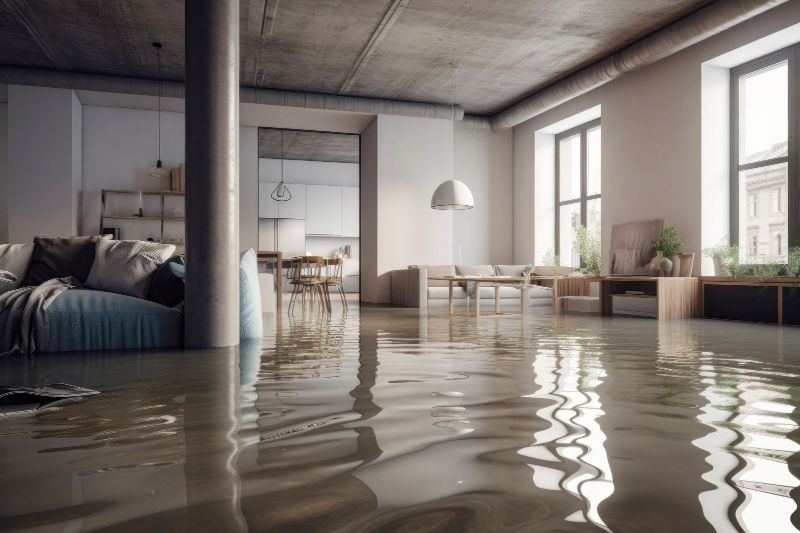Water damage is a homeowner's nightmare. Whether it's caused by a burst pipe, a leaky roof, flooding, or any other unforeseen circumstance, the consequences can be devastating. It not only affects the structural integrity of your home but also poses health risks due to mold and mildew growth. Fortunately, water damage restoration professionals are equipped to bring your home back to life. In this article, we will explore the importance of water damage restoration and the steps involved in the process.
- The Importance of Water Damage Restoration
Water damage restoration is more than just drying out a wet space; it's a comprehensive process aimed at restoring your home to its pre-damaged condition. Here's why it's crucial:
Preventing Structural Damage:
- Water can infiltrate walls, ceilings, and floors, leading to structural damage. If not addressed promptly and effectively, it can compromise the integrity of your home. Water damage restoration professionals have the knowledge and tools to assess and repair structural damage.
Mold and Mildew Mitigation:
- One of the most significant risks associated with water damage is the growth of mold and mildew. These can cause serious health problems for you and your family. Water damage restoration experts use specialized techniques to prevent and eliminate mold growth.
Salvaging Possessions:
- Water damage can ruin your personal belongings, from furniture to cherished family heirlooms. Quick restoration efforts can help salvage these items and save you money on replacements.
Insurance Claims:
- Working with professionals ensures that you have a detailed record of the damage and the steps taken to restore your home. This documentation is invaluable when filing an insurance claim.
- The Water Damage Restoration Process
A successful water damage restoration process involves several key steps. Let's delve into each of them:
Assessment and Inspection:
- The first step is a thorough assessment of the extent of the damage. Restoration professionals will inspect affected areas, identify the source of the water damage, and determine the best course of action.
Water Extraction:
- The next step is the removal of standing water. High-capacity pumps and vacuums are used to extract water quickly and efficiently, preventing further damage and mold growth.
Drying and Dehumidification:
- After the water is removed, the drying process begins. Industrial-grade dehumidifiers and air movers are strategically placed to accelerate the drying of structural elements, such as walls and floors. This step is crucial to prevent long-term damage.
Cleaning and Sanitizing:
- Once the area is dry, cleaning and sanitizing become essential. This step involves the removal of contaminants, disinfection, and deodorization. It is especially crucial if the water damage resulted from sewage or contaminated water sources.
Restoration and Repairs:
- After cleaning and sanitizing, the restoration process begins. This includes repairing structural damage, such as drywall or flooring, as well as any cosmetic work needed to return the space to its pre-damaged state.
Mold Remediation:
- If mold is present, it must be addressed promptly. Mold remediation experts will safely remove and remediate any mold growth to ensure the space is safe for habitation.
Content Restoration:
- In addition to restoring the structure of your home, professionals also specialize in content restoration. This includes cleaning and repairing damaged personal belongings and furniture.
- DIY vs. Professional Water Damage Restoration
While some homeowners may be tempted to tackle water damage restoration as a DIY project, it's essential to understand the limitations of this approach. Professional restoration offers several advantages:
Expertise and Training:
- Restoration professionals are trained to handle water damage effectively. They know how to assess the extent of the damage, identify potential hazards, and take the appropriate steps to mitigate them.
Specialized Equipment:
- Restoration experts have access to industrial-grade equipment that ensures thorough water extraction, drying, and mold remediation. This equipment is not readily available to the average homeowner.
Time Efficiency:
- Professionals can complete the restoration process more quickly, reducing the risk of additional damage and mold growth.
Insurance Compliance:
- Working with professionals ensures that the restoration process is thoroughly documented, which is essential for insurance claims.
Water damage can be a homeowner's worst nightmare, but with the help of water damage restoration professionals, your home can be brought back to life. The importance of water damage restoration cannot be overstated. It not only prevents further structural damage but also safeguards your health and possessions.
The restoration process is a comprehensive one, involving assessment, water extraction, drying, cleaning, repairs, and mold remediation. While some may be tempted to tackle restoration as a DIY project, the expertise, equipment, and efficiency that professionals bring to the table make a significant difference in the outcome.
When water damage strikes, don't hesitate to call upon the expertise of water damage restoration professionals. They will work tirelessly to restore your home and bring it back to life, ensuring a safe and healthy living environment for you and your family.

